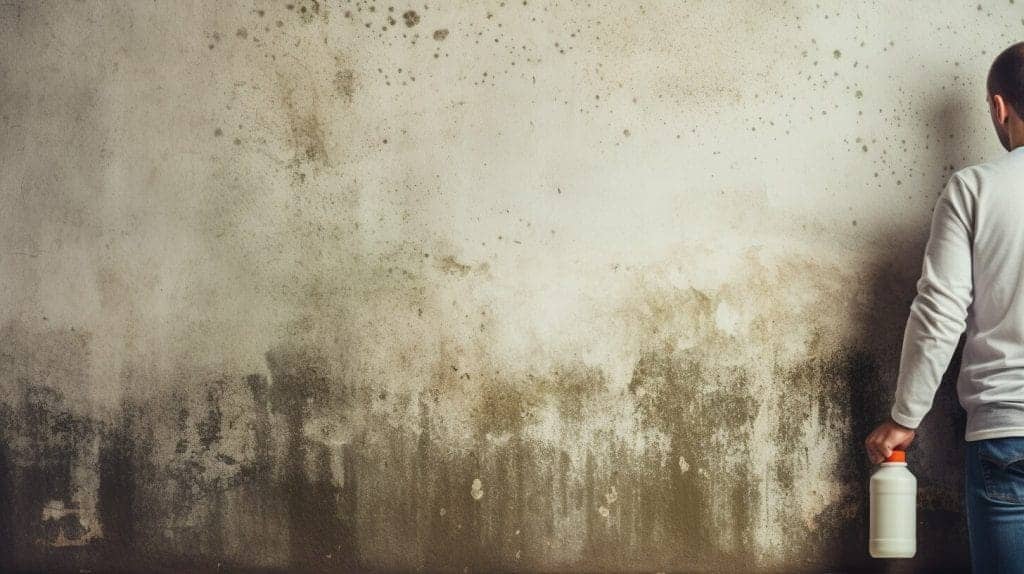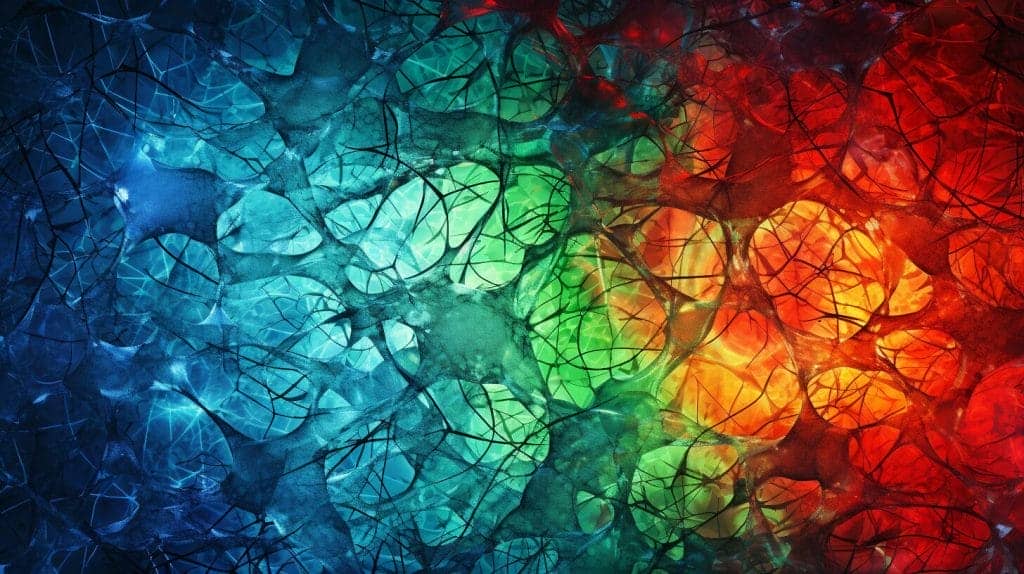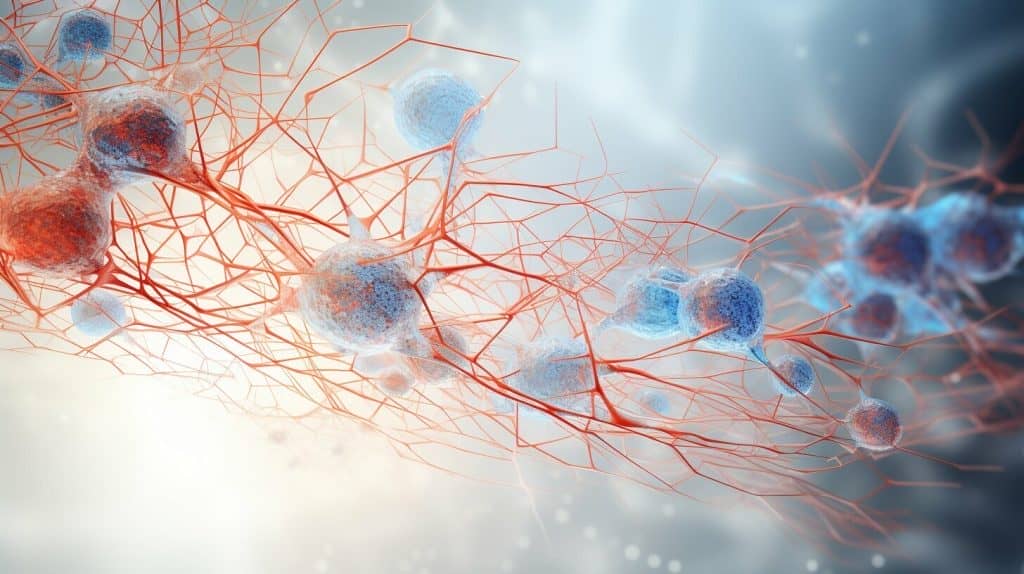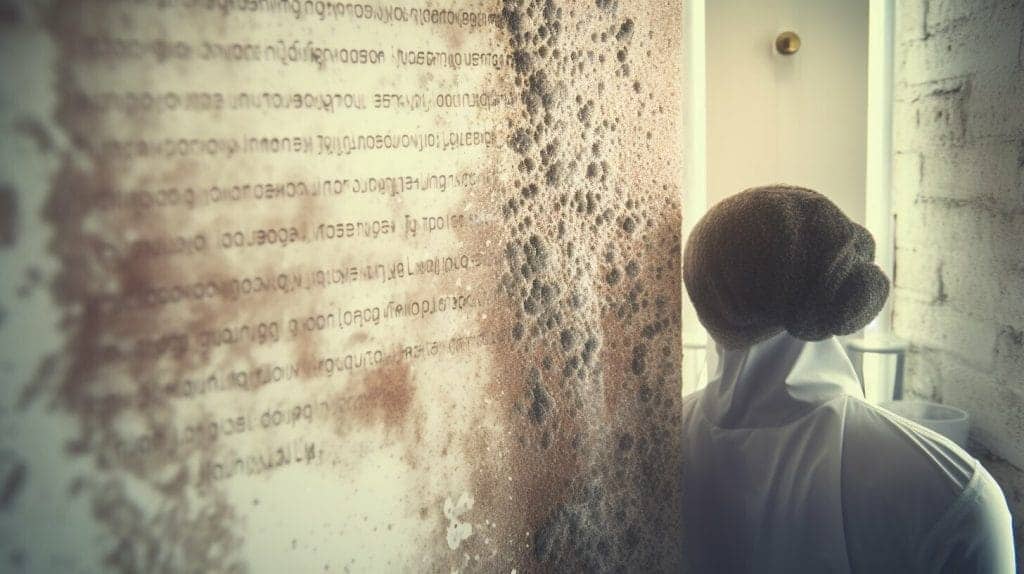Welcome to our guide on cholestyramine mold treatment. If you are suffering from mold-related health issues, you are not alone. Exposure to mold can cause a range of symptoms and health problems, including fatigue, headaches, respiratory issues, and cognitive problems. Cholestyramine is a medication that has shown promise in treating mold toxicity by binding to toxins in the body, including mold toxins, and helping to remove them.
In this guide, we will explore the use of cholestyramine for mold exposure and mold illness in detail. We will cover how it works, its dosage, possible side effects, precautions, and other methods for mold treatment. We will also provide case studies and success stories to demonstrate its effectiveness, and answer some frequently asked questions about cholestyramine use in mold treatment.
If you are considering cholestyramine as a treatment option for mold-related health issues, this guide will provide you with relevant information and guidance. Let’s dive in and discuss how cholestyramine can be an effective solution for those suffering from mold toxicity.
Understanding Mold Toxicity
Mold toxicity occurs when the body is exposed to high levels of mold spores or mycotoxins, which can cause a range of symptoms and health problems. These symptoms and health problems can include coughing, sneezing, headaches, fatigue, respiratory issues, and cognitive problems. Common sources of mold exposure include old buildings, water-damaged homes, food, and outdoor air. Ingestion, inhalation, and skin contact are the most common routes of exposure to mold and mold toxins.
The impacts of mold toxicity can vary greatly from person to person. Some people may have mild symptoms that go unnoticed, while others may experience severe symptoms that significantly impact their health and daily life. Individuals with weakened immune systems, pre-existing respiratory conditions, allergies, or asthma are more susceptible to the negative effects of mold exposure.
The Basics of Mold Toxicity Treatment
Treatment for mold toxicity typically involves a multi-faceted approach that addresses both the source of mold exposure and the body’s natural detoxification process. The first step in mold toxicity treatment is usually to remove the source of mold exposure. This may involve fixing leaks, improving ventilation, or removing contaminated materials. Once the source of mold exposure has been removed, the focus shifts to supporting the body’s natural detoxification processes.
Detoxification can involve a range of approaches, including dietary changes, supplements, and medications. Cholestyramine is one medication that has shown promise in the treatment of mold toxicity. Cholestyramine works as a binder for mold toxins in the digestive system and helps to eliminate them from the body. This can help to reduce the overall toxic load and alleviate symptoms associated with mold exposure.
Cholestyramine as a Tool for Mold Detoxification
Cholestyramine is a medication that is commonly used to treat high cholesterol levels. The medication works by binding to bile acids in the digestive system and eliminating them from the body. Cholestyramine has also been found to bind to other toxins in the digestive system, including mycotoxins from mold. This mechanism of action has led to the use of cholestyramine as a tool for mold detoxification.
When taken orally, cholestyramine passes through the digestive system and binds to mold toxins, preventing them from being absorbed into the body. The bound toxins are then eliminated from the body through bowel movements. This process can help to reduce the overall toxic load in the body and alleviate symptoms associated with mold toxicity.
How Cholestyramine Works
Cholestyramine is a medication that works by binding to toxins in the digestive system and preventing them from being absorbed into the body. When taken orally, cholestyramine moves through the digestive tract and binds to toxins, including mycotoxins from mold. Once bound, the toxins are eliminated from the body through bowel movements.
This process of binding to and removing toxins from the body helps to reduce the overall toxic load and alleviate symptoms associated with mold toxicity. Research has shown that cholestyramine can effectively bind to a range of toxins, including bile acids, cholesterol, and mycotoxins from mold.
| Pros of using Cholestyramine as a binder for mold toxins | Cons of using Cholestyramine as a binder for mold toxins |
|---|---|
| – Can effectively bind to mycotoxins from mold | – May cause constipation, bloating, and abdominal discomfort |
| – Reduces the overall toxic load in the body | – Can interfere with the absorption of other medications |
| – Alleviates symptoms associated with mold toxicity | – Not suitable for individuals with high triglycerides or a history of intestinal obstruction |
Cholestyramine as a binder for mycotoxins from mold
Cholestyramine has been proven to effectively bind to mycotoxins from mold, including trichothecenes, ochratoxin A, and aflatoxins. These toxic substances can cause a range of health problems ranging from respiratory issues to cognitive problems. By binding to these toxins, cholestyramine helps to eliminate them from the body, reducing the overall toxic load and alleviating symptoms associated with mold exposure.
The importance of removing the source of mold exposure
While cholestyramine can be an effective treatment for mold toxicity, it is important to also remove the source of mold exposure to fully address the issue. This may involve identifying and eliminating the source of mold growth in the home or workplace, improving indoor air quality, and reducing exposure to environmental toxins. In combination with cholestyramine, these strategies can help to reduce the risk of ongoing mold exposure and support the body’s natural detoxification processes.
Cholestyramine for Mold Sensitivity
Cholestyramine has shown promise in treating mold sensitivity, which is a condition where individuals are highly sensitive to mold and experience symptoms at even low levels of exposure. Cholestyramine can help to eliminate mycotoxins from the body and reduce the overall toxic load, which can alleviate symptoms associated with mold sensitivity.
While cholestyramine can be an effective treatment for mold sensitivity, it is important to work with a healthcare provider to determine the appropriate dosage and length of treatment. In some cases, a healthcare provider may recommend other treatments or therapies in addition to cholestyramine to address mold sensitivity.
Cholestyramine Dosage for Mold Treatment
The dosage of cholestyramine for mold treatment can vary depending on the individual and the severity of their mold exposure. It is important to work with a healthcare provider to determine the appropriate dosage and length of treatment. The general recommended dosage for cholestyramine in mold treatment is 4 grams per day, taken in divided doses. This dosage can be titrated up or down based on individual response and tolerance.
Factors that can impact the dosage of cholestyramine include the individual’s weight, age, and overall health. In addition, the severity of mold exposure and the presence of other health conditions or medications can also impact the appropriate dosage of cholestyramine. It is important to work with a healthcare provider who is experienced in mold treatment to determine the appropriate dosage and length of treatment.
Possible Side Effects of Cholestyramine
As with any medication, cholestyramine can have side effects. Common side effects may include constipation, bloating, and abdominal discomfort. These side effects typically resolve on their own or with adjustments to dosage or timing of medication.
Less common but potentially severe side effects include allergic reactions, liver problems, and vitamin deficiency. It is important to be aware of the potential side effects when starting cholestyramine and to report any severe or persistent side effects to a healthcare provider.
It is also worth noting that cholestyramine can interact with other medications, reducing their effectiveness. It is important to discuss all medications with a healthcare provider before starting cholestyramine treatment.
Precautions and Considerations for Cholestyramine Use
Before starting cholestyramine treatment for mold-related health issues, there are certain precautions and considerations that must be taken into account:
| Consideration | Explanation |
|---|---|
| Underlying Health Conditions | Individuals with certain health conditions, such as high triglycerides or a history of intestinal obstruction, should not take cholestyramine. It is important to discuss any underlying health conditions with a healthcare provider before starting cholestyramine treatment. |
| Medication Interactions | Cholestyramine can interfere with the absorption of other medications, so it is important to separate the timing of other medications from cholestyramine doses. It is important to discuss any medications being taken with a healthcare provider before starting cholestyramine treatment. |
| Monitoring | A healthcare provider should monitor individuals taking cholestyramine to ensure that it is being properly tolerated and that it is effective in reducing mold-related symptoms. It is important to work with a healthcare provider throughout the course of cholestyramine treatment. |
By taking these precautions and considerations into account, individuals can safely and effectively use cholestyramine as a tool in their mold treatment plan.
Other Methods for Mold Treatment
While cholestyramine can be an effective tool for mold treatment, it is not the only method available. Other methods for mold treatment may include:
- Removing the source of mold exposure: This may involve repairing leaks or water damage, improving ventilation, and reducing humidity levels.
- Improving indoor air quality: This may involve using air purifiers, changing air filters regularly, and increasing ventilation.
- Supporting the body’s natural detoxification processes: This may involve eating a nutrient-dense diet, staying hydrated, and reducing exposure to environmental toxins.
It is important to work with a healthcare provider to determine the best approach for mold treatment, as it can be a complex and individualized process.
Diet and Lifestyle Changes for Mold Treatment
In addition to medical treatments like cholestyramine, diet and lifestyle changes can also aid in mold treatment by supporting the body’s natural detoxification processes. Below are some dietary and lifestyle changes that can be beneficial in conjunction with cholestyramine treatment:
- Eat a nutrient-dense diet: Consuming whole foods that are rich in vitamins and minerals can help to support the body’s immune system and detoxification pathways. Focus on eating a variety of fruits, vegetables, whole grains, healthy fats, and lean proteins.
- Stay hydrated: Drinking enough water is crucial for flushing toxins out of the body. Aim for at least eight glasses of water per day, and consider incorporating herbal teas or coconut water for additional hydration.
- Reduce exposure to environmental toxins: Mold is not the only toxin that can affect the body. Limit exposure to other environmental toxins like pesticides, heavy metals, and pollutants by using natural cleaning products, avoiding processed foods, and choosing organic produce when possible.
- Get enough sleep: Sleep is crucial for overall health and plays a role in detoxification. Aim for seven to nine hours of sleep per night and establish a consistent sleep routine.
- Manage stress: Chronic stress can affect the body’s immune system and make it more difficult to detoxify. Incorporate stress-management techniques like meditation, yoga, or deep breathing into your daily routine.
- Exercise regularly: Exercise can improve circulation and help to flush toxins out of the body. Aim for at least 30 minutes of moderate exercise per day, such as brisk walking or cycling.
These dietary and lifestyle changes can be beneficial in supporting the body’s natural detoxification processes and aiding in mold treatment. It’s important to work with a healthcare provider to determine the appropriate treatment plan and to discuss any dietary or lifestyle changes you plan to make.
Working with a Healthcare Provider for Mold Treatment
It is important to work with a healthcare provider who has experience in treating mold-related health issues. A healthcare provider can:
- Determine the appropriate treatment plan, including cholestyramine dosage
- Monitor progress throughout treatment
- Recommend other treatment options or lifestyle changes to support mold treatment
- Provide guidance on any potential interactions with other medications or health conditions
When seeking a healthcare provider for mold treatment, consider finding a provider who specializes in environmental medicine or functional medicine. These providers often have additional training and expertise in treating mold-related health issues.
Case Studies and Success Stories of Cholestyramine for Mold Treatment
There have been numerous case studies and success stories of individuals using cholestyramine for mold treatment. These stories demonstrate the potential effectiveness of cholestyramine in alleviating symptoms associated with mold exposure and toxicity.
Case Study 1:
| Background: | A 35-year-old female with chronic fatigue, headaches, and respiratory issues. |
|---|---|
| Treatment: | Cholestyramine as a binder for mold toxins. |
| Outcome: | After several weeks of treatment, the patient reported significant improvement in energy levels and respiratory symptoms. |
Case Study 2:
| Background: | A 40-year-old male with cognitive problems and joint pain. |
|---|---|
| Treatment: | Cholestyramine as a binder for mold toxins. |
| Outcome: | After several months of treatment, the patient reported significant improvement in cognitive function and joint pain. |
While these case studies are promising, it is important to note that cholestyramine may not work for everyone and should be used in conjunction with other treatment methods. It is important to work with a healthcare provider to determine the appropriate treatment plan.
Cholestyramine and Mold Illness: What You Need to Know
Mold illness is a condition that can result from exposure to mold and mycotoxins, which can have a range of symptoms and health impacts. Symptoms of mold illness can include fatigue, headaches, respiratory issues, and cognitive problems. Mold illness is often misdiagnosed or not recognized by healthcare providers, which can lead to prolonged suffering for individuals affected by the condition.
Cholestyramine has shown promise in treating mold illness and alleviating symptoms associated with this condition. Cholestyramine is a medication that binds to toxins in the digestive system, including mycotoxins from mold, and helps to remove them from the body. This can reduce the overall toxic load in the body and alleviate symptoms associated with mold illness.
One of the challenges with treating mold illness is identifying the source of exposure and eliminating it. This may involve identifying areas of mold growth in the home or workplace and implementing measures to improve indoor air quality. In addition, supporting the body’s natural detoxification processes through diet and lifestyle changes can also be beneficial.
Cholestyramine can be a valuable tool in the treatment of mold illness, particularly in cases where exposure cannot be easily eliminated or when symptoms are severe. It is important to work with a healthcare provider who has experience in treating mold-related health issues to determine the appropriate treatment plan, including cholestyramine dosage and length of treatment.
Cholestyramine and Biotoxin Illness
Biotoxin illness is a term used to describe illnesses caused by exposure to biotoxins, which includes mycotoxins from mold. Cholestyramine has been used as a treatment for biotoxin illness, and has shown promising results in alleviating symptoms associated with this condition.
Biotoxin illness can be challenging to diagnose and treat, as symptoms may be nonspecific and vary from person to person. In addition, exposure may occur through a variety of sources, including water-damaged buildings, contaminated food, and exposure to toxins in the workplace.
Cholestyramine can be a valuable tool in the treatment of biotoxin illness, particularly in cases where exposure cannot be easily eliminated or when symptoms are severe. It is important to work with a healthcare provider who has experience in treating biotoxin illness to determine the appropriate treatment plan, including cholestyramine dosage and length of treatment.
FAQs About Cholestyramine for Mold Treatment
What is cholestyramine?
Cholestyramine is a medication that binds to toxins, including mold toxins, in the digestive system and helps to eliminate them from the body through bowel movements.
How does cholestyramine help with mold exposure?
Cholestyramine binds to mycotoxins, which are toxins produced by mold, and helps to remove them from the body, reducing the overall toxic load and alleviating symptoms associated with mold exposure.
What is the typical dosage for cholestyramine in mold treatment?
The dosage of cholestyramine for mold treatment may vary depending on the individual and the severity of their mold exposure. It is important to work with a healthcare provider to determine the appropriate dosage and length of treatment.
Are there any side effects of cholestyramine?
Common side effects of cholestyramine include constipation, bloating, and abdominal discomfort. These side effects are typically mild and resolve on their own.
Can cholestyramine be used for mold sensitivity?
Yes, cholestyramine has shown promise in treating mold sensitivity, which is a condition where individuals are highly sensitive to mold and experience symptoms at even low levels of exposure. Cholestyramine can help to eliminate mycotoxins from the body and reduce the overall toxic load, which can alleviate symptoms associated with mold sensitivity.
What other methods can be used for mold treatment?
Other methods for mold treatment may include removing the source of mold exposure, improving indoor air quality, supporting the body’s natural detoxification processes through diet and lifestyle changes, and working with a healthcare provider to determine the appropriate treatment plan.
Conclusion
Overall, cholestyramine can be a valuable tool in the treatment of mold-related health issues. By binding to toxins in the digestive system, cholestyramine can help to reduce the overall toxic load in the body and alleviate symptoms associated with mold exposure. While cholestyramine is not the only method available for mold treatment, it can be effective when used in conjunction with other approaches, such as removing the source of mold exposure and supporting the body’s natural detoxification processes. It is important to work with a healthcare provider to determine the appropriate dosage and length of treatment and to monitor progress throughout treatment. With the right care and guidance, cholestyramine can be an effective solution for those seeking relief from mold-related health issues.
Frequently asked questions about cholestyramine mold treatment
Q: What is cholestyramine and how does it work?
A: Cholestyramine is a medication that binds to toxins in the digestive system, including mold toxins, and helps to remove them from the body through bowel movements.
Q: Can cholestyramine be used for mold toxicity?
A: Yes, cholestyramine has shown promise in treating mold toxicity by reducing the overall toxic load in the body.
Q: What is the typical dosage range for cholestyramine in mold treatment?
A: The dosage of cholestyramine can vary depending on the individual and the severity of their mold exposure. It is important to work with a healthcare provider to determine the appropriate dosage and length of treatment.
Q: Are there any side effects of cholestyramine?
A: Common side effects include constipation, bloating, and abdominal discomfort. However, these side effects are typically mild and resolve on their own.
Q: Can cholestyramine be used for mold sensitivity?
A: Yes, cholestyramine has shown promise in treating mold sensitivity by reducing the overall toxic load in the body.
Q: What precautions should I take when using cholestyramine?
A: It is important to consider any underlying health conditions or medications that may interact with cholestyramine. Cholestyramine should not be taken by individuals with high triglycerides or a history of intestinal obstruction.
Q: Is cholestyramine the only method available for mold treatment?
A: No, other methods for mold treatment may include removing the source of mold exposure, improving indoor air quality, and supporting the body’s natural detoxification processes.
Q: Can diet and lifestyle changes help with mold treatment?
A: Yes, diet and lifestyle changes can support the body’s natural detoxification processes and may be beneficial in mold treatment.
Dr. Francisco Contreras, MD is a renowned integrative medical physician with over 20 years of dedicated experience in the field of integrative medicine. As the Medical Director of the Oasis of Hope Hospital in Tijuana, Mexico, he has pioneered innovative treatments and integrative approaches that have been recognized globally for the treatment of cancer, Lyme Disease, Mold Toxicity, and chronic disease using alternative treatment modalities. Dr. Contreras holds a medical degree from the Autonomous University of Mexico in Toluca, and speciality in surgical oncology from the University of Vienna in Austria.
Under his visionary leadership, the Oasis of Hope Hospital has emerged as a leading institution, renowned for its innovative treatments and patient-centric approach for treating cancer, Lyme Disease, Mold Toxicity, Long-Haul COVID, and chronic disease. The hospital, under Dr. Contreras's guidance, has successfully treated thousands of patients, many of whom traveled from different parts of the world, seeking the unique and compassionate care the institution offers.
Dr. Contreras has contributed to numerous research papers, articles, and medical journals, solidifying his expertise in the realm of integrative medicine. His commitment to patient care and evidence-based treatments has earned him a reputation for trustworthiness and excellence. Dr. Contreras is frequently invited to speak at international conferences and has been featured on CNN, WMAR2 News, KGUN9 News, Tyent USA, and various others for his groundbreaking work. His dedication to the medical community and his patients is unwavering, making him a leading authority in the field.
Contreras has authored and co-authored several books concerning integrative therapy, cancer, Lyme Disease and heart disease prevention and chronic illness, including "The Art Science of Undermining Cancer", "The Art & Science of Undermining Cancer: Strategies to Slow, Control, Reverse", "Look Younger, Live Longer: 10 Steps to Reverse Aging and Live a Vibrant Life", "The Coming Cancer Cure Your Guide to effective alternative, conventional and integrative therapies", "Hope Medicine & Healing", "Health in the 21st Century: Will Doctors Survive?", "Healthy Heart: An alternative guide to a healthy heart", “The Hope of Living Cancer Free”, “Hope Of Living Long And Well: 10 Steps to look younger, feel better, live longer” “Fighting Cancer 20 Different Ways”, "50 Critical Cancer Answers: Your Personal Battle Plan for Beating Cancer", "To Beat . . . Or Not to Beat?", and “Dismantling Cancer.”









